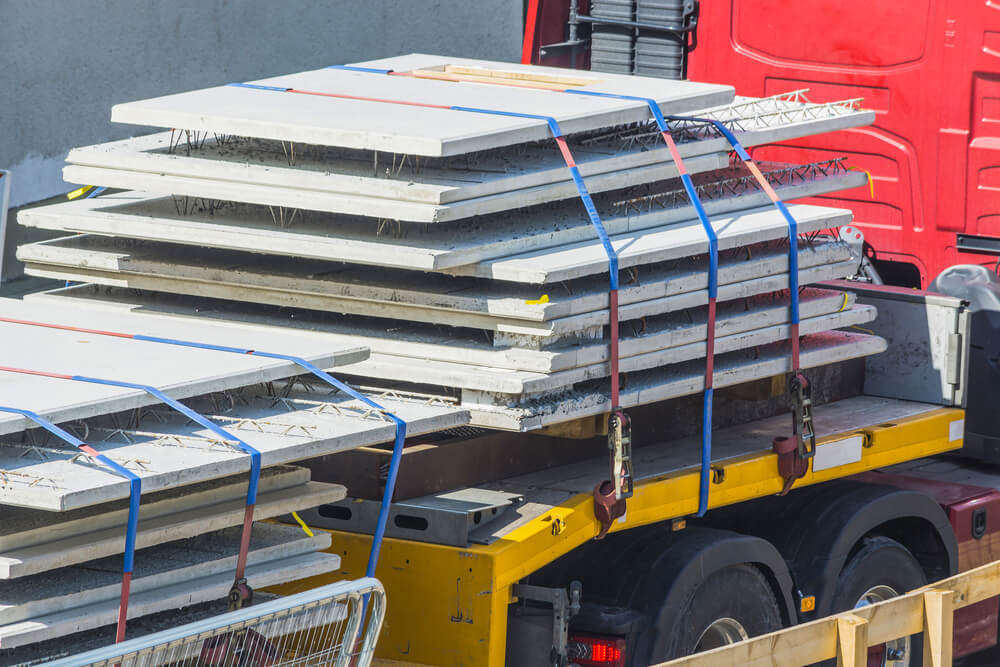Driver training in and around Leeds is an important training service for anyone in the North of England looking for a career in professional driving, as there is a lot to learn before you can officially and legally work in the industry. From daily maintenance checks to staying compliant with working hours regulations, our HGV training in Leeds (approved by DVSA) helps thousands of people just like you to realise their driving career ambitions.
Here we take a look at one of the many important disciplines those taking HGV driver training in Leeds will need to master to stay safe whilst transporting goods on the road. That discipline concerns the safe loading of the variety of load types that exist, each of which requires different methods and equipment to carry out safely.
Securing goods correctly on the back of an HGV vehicle is key to keeping the driver and all other road users safe. There are some guiding principles that anyone taking LGV/HGV driver training will need to follow many times during their career to keep everyone safe and their truck undamaged. The first principle is the securing system used needs to be able to withstand the entire load weight forwards (in case of heavy braking), half the weight to the rear and to the sides, case of unexpected lateral movement.

The second principle relates to the fact that you should always be looking to be using the structure of the trailer or vehicle to secure your goods, strapping it to the bulkhead or headboard if possible. Any gaps between these anchor points and the load need to be packed with pallets or similar materials to prevent any undesired movement. Last, but not least, the third principle involves using the correct restraints and lashes for the type of load you’re carrying. Some trailers come with equipment built in to make securing loads easier, but typically you’ll be looking at using netting, webbing, lashes or chains, depending on what it is you’re transporting.
There are two main methods of lashing and they’re known as frictional lashing and direct lashing. Direct lashing is primarily used for the loading of heavy machinery and plant equipment, with lashes being used in opposing pairs. Frictional lashing is the more common variety of the two and it involves putting lashes over the load from one side of the trailer or vehicle to the other. The quantity of lashes will depend on factors like load weight, the rating of your lashings, load bed friction and how many tensioners you use.
The angle of the lashing is really important and it should be as close to vertical as possible. If this is proving difficult and your load looks low, you can take measures like placing pallets underneath and on top of the load to increase the angle. As we said before, lashings aren’t always appropriate, especially if you’re transporting aggregates or powder, which is when you would use chains and perhaps even a vehicle with stillages or boxes inside.
Essentially, every care needs to be taken to choose the right securing method for the right load, as the consequences of not doing so can be severe. Incorrectly secured loads are also a danger to the driver, as many people are hurt each year unloading unstable loads from their vehicles.
At HGVT, we offer high-quality HGV Training in Birmingham, London, Manchester and most major UK cities via our network of approved training centres across the country. If you’d like to find out more about what’s involved, get in touch and we’ll explain everything you need to know.
Just fill in your details below and we’ll send you a free theory test practice with.
Just let us know your score...
We reserve the right to contact you in the
future via this email
By Signing up, you agree to our Terms & Privacy Policy
By Signing up, you agree to our Terms & Privacy Policy
By Signing up, you agree to our Terms & Privacy Policy
By Signing up, you agree to our Terms & Privacy Policy
By Signing up, you agree to our Terms & Privacy Policy